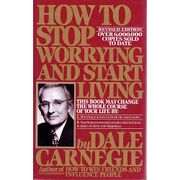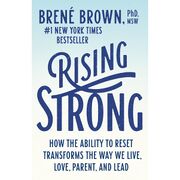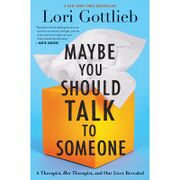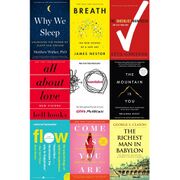The Let Them Theory
🍎 Healthy brain food
"And just like that, the knot in my chest began to loosen. The pressure to “fix” the situation faded, and I realized something that changed everything: Their weekend away had nothing to do with me."
— Mel Robbins, The Let Them Theory (2024)
Introduction
| The Let Them Theory | |
|---|---|
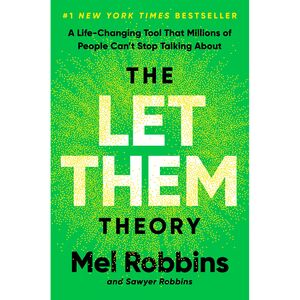 | |
| Full title | The Let Them Theory: A Life-Changing Tool That Millions of People Can't Stop Talking About |
| Author | Mel Robbins; Sawyer Robbins |
| Language | English |
| Subject | Personal development; Self-help; Interpersonal relations |
| Genre | Nonfiction; Self-help |
| Publisher | Hay House LLC |
Publication date | 24 December 2024 |
| Publication place | United States |
| Media type | Print (hardcover); e-book; audiobook |
| Pages | 336 |
| ISBN | 978-1-4019-7136-6 |
| Goodreads rating | 4.1/5 (as of 6 November 2025) |
| Website | melrobbins.com |
📘 The Let Them Theory is a nonfiction self-help book by Mel Robbins, co-authored with Sawyer Robbins and published by Hay House on 24 December 2024 (336 pp.).[1][2] It sets out a two-step “let them/let me” method that asks readers to stop trying to manage other people’s opinions or behavior and to redirect effort toward their own choices and responses.[3] Robbins writes in down-to-earth, anecdotal prose.[3] The publisher bills it as a step-by-step guide that applies the idea across eight key areas and mixes stories, research, and expert interviews.[1] In late July 2025, Publishers Weekly reported the title again at #1 on its hardcover nonfiction bestseller list.[4] By 30 August 2025, The Washington Post, quoting Hay House’s chief executive, reported 3.6 million English-language copies sold and described a wave of reader tattoos and community book clubs around the mantra.[5]
Chapter summary
This outline follows the Hay House hardcover edition (United States, 24 December 2024, ISBN 978-1-4019-7136-6).[1] For publication date and page count corroboration, see the UK edition metadata.[6]
I – The Let Them Theory
🛑 1 – Stop Wasting Your Life on Things You Can’t Control. Prom day at the Robbins house goes sideways: her son Oakley dismisses the corsage she ordered, there is no dinner reservation, and the teens want a casual pre-prom taco bar. The urge to manage everything spikes until her daughter cuts through the chaos with a blunt reminder—“it’s their prom”—and the tension drops as the evening unfolds without interference. The vignette shows how choreographing other people’s choices breeds anxiety, resentment, and unnecessary project management around someone else’s milestone. Stepping aside does not fix weather or tuxedos; it changes where attention and energy go. Redirect time and mental bandwidth from monitoring others to decisions within reach—what to say, do, or let pass. The pivot reduces rumination and restores agency by separating externals (others’ preferences, timing, opinions) from internals (your actions and boundaries). In the book’s language, “Let Them” is the release valve that interrupts control-seeking and creates space for better choices.
🔀 2 – Getting Started: Let Them + Let Me. On her couch, she scrolls a carousel of photos and sees friends from her small suburban town on a weekend trip without her. The gut-punch lands, doom-scrolling begins, and Chris asks why she cares so much; the storylines still bloom. Instead of texting for reassurance or triangulating through mutuals, she repeats “Let Them” again and again—dozens of times—until the knot in her chest loosens. The precise insight follows: their weekend had nothing to do with her, and trying to “fix” it only amplified hurt. The chapter formalizes the two-step method: “Let Them” releases the illusion of control over other people; “Let Me” turns immediately to the next wise action. Practically, that might mean closing the app, planning your own connection, or choosing calm; the emphasis is agency, not approval. The sequence pairs cognitive defusion (naming and letting thoughts pass) with values-aligned behavior, moving attention from social comparison to deliberate choice—the book’s central theme. It was about releasing myself from the control I never had in the first place.
II – You and the Let Them Theory
🌩️ 3 – Shocker: Life Is Stressful. A weekday morning slips off the rails: calendar pings stack up, the group chat floods with last-minute changes, and the commute stalls while emails pile up. The first instinct is to tighten your grip—text reminders, push, persuade—until every moving part depends on you. Instead, do a quick triage at the kitchen counter: list the stressors, mark those driven by other people, and write “Let Them” beside each item you do not control. What remains—packing the bag, setting a departure time, choosing a calmer reply—falls under “Let Me.” As attention returns to the next steps, the body settles, rumination fades, and the day regains a workable rhythm. Stress does not disappear; energy wasted on managing others becomes fuel for actions you can actually take. Accepting that life is stressful turns the mantra into a boundary tool that separates externals from internals in real time. Shifting attention and behavior toward controllable moves restores agency and reduces overthinking and over-managing.
🧘 4 – Let Them Stress You Out. In a team chat, a colleague broadcasts urgency for instant weekend work while a manager drops a curt update that changes the plan. The urge to jump in, soothe everyone, and rescue the timeline surges. A counterintuitive practice helps: allow their urgency to be theirs—“Let Them”—and watch what it pulls up in you without obeying it. Then set a concrete boundary: acknowledge the update, state when you will review, and return to the task that already matters. Treat the spike in your chest as data, not a command; use a short pause to choose tone, timing, and scope. The ripple effect is measurable: fewer reactive messages, cleaner commitments, less resentment from over-functioning. Stress becomes a training signal for boundary-setting rather than a trigger for people-pleasing. Other people’s stress can inform your priorities without dictating them, and repeated small boundaries shift rescuing into intentional response.
🗣️ 5 – Let Them Think Bad Thoughts about You. After declining a standing invite, a friend leaves your message on “seen,” and a neighbor’s offhand comment suggests you have become distant. Mind-reading fills the gaps with worst-case stories: they are offended, they are judging, they are done. Let them have their thoughts, because you cannot proofread other people’s minds. Write one clear sentence about what matters now—family time, health, focused work—and act on it, whether that means showing up where you promised or staying offline without apology. Resist over-explaining; send a simple, truthful note only if it serves the relationship, not your anxiety. You will notice more time, steadier mood, and fewer circular conversations aimed at approval. The point is alignment, not indifference. Releasing control over others’ opinions frees attention for values-matched choices and keeps behavior anchored to what you can decide next.
🤝 6 – How to Love Difficult People. A long weekend with extended family turns tense when a relative critiques your choices at dinner and tries to pull you into old arguments. The first impulse is to correct, defend, and smooth things over so everyone stays comfortable. Slow that reflex with a simple drill: notice what belongs to them—opinions, timing, tone—and what belongs to you—availability, topics you will discuss, when you leave. Two short lists make the split visible: under “Let Them,” write what you will no longer manage; under “Let Me,” write the next action you will take. That might mean changing seats, ending a circular conversation with one neutral sentence, or stepping outside to reset before rejoining. Caring remains; rescuing stops. The atmosphere shifts because you stop over-functioning, not because the other person changes. Loving difficult people looks like warmth plus limits rather than appeasement. When you stop trying to control someone else’s reactions, you recover agency for your choices, and relationships simplify because expectations are honest.
👶 7 – When Grown-Ups Throw Tantrums. In a crowded checkout line, a raised voice, fast breath, and pointed finger turn a minor delay into a scene. Matching the volume or explaining harder feeds the spiral, so use a different sequence. First, recognize the telltales of an adult meltdown—tight jaw, rapid speech, absolute language—and label it as their reaction. Second, remove heat: lower your voice, slow your pace, give space, and decide whether the moment is safe or needs an exit. If the relationship matters, a short boundary—“I’ll talk when this is calmer”—beats debating facts that will not land mid-surge. If it does not, disengage without flinching, because managing another adult’s nervous system is not your job. After the spike passes, choose whether any follow-up is needed and on what terms. Treating the outburst as data rather than a command prevents you from absorbing it. Letting others feel their feelings while you choose your response breaks rescuing and keeps behavior aligned with what you can control.
🧭 8 – The Right Decision Often Feels Wrong. A job offer, a breakup, or a move lines up on paper, yet your stomach drops the moment you commit. Bodies flag change as threat even when minds see fit, and other people’s reactions magnify doubt. Skip the reassurance poll and anchor to a small, dated next step—a calendar entry to send notice, a one-line email, a packed box—and expect discomfort to ride along. Expect pushback, too: a coworker warns you are making a mistake, a friend projects fear, a relative negotiates you back to familiar. “Let Them” names those reactions as theirs; “Let Me” keeps you moving one concrete action at a time. A brief check—sleep, food, a walk—helps separate nerves from true red flags, and if a fact changes, adjust without shame. The sense of wrongness often marks identity shedding, not bad judgment; clarity grows after steps, not before them. Letting others hold their opinions while you honor your plan converts second-guessing into momentum and keeps choices tethered to values rather than noise.
⚖️ 9 – Yes, Life Isn’t Fair. You invest months in a project, a last-minute reorg moves the decision elsewhere, and someone with more access walks away with the credit. Courtroom thinking follows—replaying slights and drafting speeches nobody will hear. Reset at the kitchen table or in a parked car: name what is unfair without sugarcoating it, then mark every part you do not control. Next, choose one small response inside your lane—document your work, ask for a clarifying meeting, or redirect effort to an opportunity that does not depend on gatekeepers. When the mind returns to scorekeeping, repeat the split: “Let Them” handle their choices and politics; “Let Me” keep momentum by choosing the next concrete move. The point is not to excuse imbalance but to stop spending your best energy on outcomes owned by other people. Over time, focus tightens, resentment drops, and a track record builds. Seen this way, unfairness becomes information for strategy, not a lifelong grievance. Accepting what sits outside your reach creates room to act where your actions matter.
🧑🏫 10 – How to Make Comparison Your Teacher. The scroll starts with a friend’s promotion photo, a runner’s pace screenshot, a colleague’s launch day; in minutes, curiosity turns to smallness. Rather than unfollow everything that stings, turn envy into a syllabus. Pause on one example and study it like a film coach: what behaviors, skills, and choices produced that result; what parts are replicable; what timeline fits you. Write one practice to try this week—schedule a weekly portfolio review, send two pitches, or learn a tool the person mastered—and put it on your calendar. If the comparison highlights a path you do not want, say so and let it go; admiration does not equal assignment. Use someone else’s highlight as a breadcrumb trail, not a verdict on your worth. The sting fades when feelings become actions that match your season and constraints. Letting them have their path frees you to build your own, step by step. Turning judgment into inquiry and scrolling into practice keeps focus on what you can choose next.
III – Your Relationships and the Let Them Theory
🧑🤝🧑 11 – The Truth No One Told You about Adult Friendship. Graduation caps are barely down before the group chat thins out and friends spread to new cities, jobs, and routines—the chapter calls this season “the Great Scattering.” It lays out three conditions that make adult friendship work: proximity (how often you are physically near each other), timing (whether life stages align), and energy (the felt click when you are together). It also points to University of Kansas research showing that friendships deepen with time invested—roughly dozens of hours for casual bonds and over 200 hours for close ones—so drift often reflects logistics, not betrayal. With that lens, being left off a weekend trip stings less; it is usually a pillar shifting, not a verdict on your worth. Run a simple audit: list your circle, label which pillar is missing, and decide whether to flex or release. If proximity is the issue, choose recurring contact points; if timing is off, keep a light touch and let seasons change; if energy fades, wish them well and stop forcing it. “Let Them” reframes the story you tell yourself when friendships change, and “Let Me” turns attention to invitations, routines, and places where connection can grow. Friendship is built by conditions you can influence, not by managing other people; shifting focus from others’ choices to repeatable behaviors converts comparison into practice and keeps relationships honest.
🍂 12 – Why Some Friendships Naturally Fade. A once-daily text thread goes quiet, plans stall, and you notice a dinner photo without you; the reflex is to assume rejection. Treat fading as a normal signal that one or more pillars—proximity, timing, energy—has shifted after a move, new caregiving load, or changed schedule. A “rubber band” metaphor helps: give the relationship slack instead of yanking, and it can snap back when conditions line up again. Pause the chase, drop the detective work, and set a gentle cadence—reply when you can, send a periodic “thinking of you,” and stop over-explaining. If there is a repair to make, do it clearly once; if not, release the expectation that the friendship should look like last year’s version. Avoid resentment-building “maintenance texts” that mask a demand for proof; they corrode goodwill faster than silence. Grieve what is changing and notice where effort feels mutual. Endings and ebbs are not personal failures; they are data to right-size investment. Letting others be where they are while you choose how to show up turns fading from drama into boundary and reduces rumination while restoring agency.
🌟 13 – How to Create the Best Friendships of Your Life. The chapter pivots from diagnosis to a build plan that favors action over wishing: go first, in small, scheduled ways. Use a three-step loop—identify two people you enjoy, make one specific ask (day, time, place), and put the next touchpoint on the calendar before you part—then repeat weekly for six weeks. Because proximity and time do most of the work, choose “sticky” contexts: a standing coffee at 8 a.m. near your gym, a Thursday walk after work, or a monthly potluck with a rotating host. Accelerate comfort with micro-rituals (a question of the week, a quick check-in round) and low-lift hospitality (store-bought snacks, simple routes, predictable start/stop). Count awkwardness as the price of admission; if someone declines, Let them and keep inviting elsewhere. Track what energizes you and prune what does not so the hours you invest compound with people who reciprocate. Ask for help directly and receive it without apology; letting others contribute strengthens the bond. Extraordinary friendships are the by-product of ordinary, repeated behaviors; pairing “Let Them” (release others’ pace and preferences) with “Let Me” (own consistent, values-aligned outreach) builds a circle that fits the life you are living.
🔄 14 – People Only Change When They Feel Like It. A familiar loop: you send reminders, make plans for someone else’s habit change, and carry the frustration when nothing sticks. A phone call becomes a lecture, a text thread becomes checking up, and the calendar fills with their deadlines instead of your own. The pattern is expensive—time, energy, and goodwill drain—while the other person’s motivation stays flat. Reset by describing the line once, offering specific help tied to their effort, and then stopping the outcome management you do not control. If they take a step, meet it; if not, let the situation play out. Shift focus to “Let Me” tasks that improve your day regardless of their choice—sleep, movement, work blocks, or plans with people who follow through. The space reveals whether the change is theirs to make now or not at all. Trade pressure for clarity: people change on their own timeline, and your leverage is a boundary, not an argument. Allowing others to own their decisions keeps your behavior aligned with what you can choose next.
🎯 15 – Unlock the Power of Your Influence. Influence here does not mean pushing harder; it means becoming easy to follow. A small team misses handoffs and a parent–teen standoff at home stalls—both stuck in nag–defend loops. The fix is the same: model the behavior you want, make clean requests with a clear by-when, and remove the hidden rescues that let others opt out. Short, specific cues replace speeches—what, when, where, and how you will follow up—while appreciation closes the loop when someone meets the mark. Audit the environment so the right action is the easiest one: shared checklists, visible calendars, recurring slots that make showing up default. When someone declines, Let them and move forward with those who engage; commitment becomes unmistakable. Over time, consistency and clarity compound into trust, and people begin to match the tone and pace you set. This is social learning, not control; people respond to what you repeatedly do, not what you repeatedly demand. Let them choose while you model and invite, and influence emerges from boundaries and example.
🛟 16 – The More You Rescue, The More They Sink. A classic money-mess cycle: a loved one overspends, hides the bill, panics, and you quietly pay it to “keep the peace.” Relief is brief; the pattern returns because the consequence never lands where it belongs. Start by naming the line—what you will and will not do—and separating support from rescue. Support looks like sitting with them while they call the bank, sharing a budget template, or offering a ride to a meeting they scheduled; rescue is doing those steps for them, funding the shortfall, and absorbing the stress. Expect pushback when the safety net disappears and stay calm, repeating the boundary without a lecture. If a crisis is urgent, help in ways that leave responsibility intact, then step back so learning can happen. As the cycle breaks, you gain time, steadier mood, and a cleaner relationship because roles are no longer blurred. Letting people meet the results of their choices is not abandonment; it is how accountability—and real change—takes root. Shifting from rescuing to responsible support releases control of others and invests energy where your actions matter.
🤗 17 – How to Provide Support the Right Way. A late-night call lands at your kitchen table: a friend just lost a job, and the reflex is to fix everything before sunrise. Instead of launching advice, send one text with options—“advice, action, or company?”—and wait for a one-letter reply. When “C” comes back, set a 20-minute FaceTime, listen, and resist the urge to network on their behalf without permission. After the call, propose one small action they can own—a résumé draft by noon tomorrow—and offer a specific assist if they choose it, like sharing a template or proofreading at 5 p.m. Put the check-in on a calendar, not in a string of anxious messages, and let silence mean they are handling it, not that you should step in. If they pivot to “A” or “B,” follow their lead; if not, keep your boundary and your evening. Keep help visible but lightweight: a ride, a link, a meal drop-off they scheduled. Care remains while control drops, and the friendship feels lighter because roles are clear. Real support honors another person’s agency and protects your time; pairing “Let Them” with a menu of specific offers prevents rescuing and channels effort into actions the other person wants and will own.
🕵️ 18 – Let Them Show You Who They Are. The first month of dating offers a clean lab: text threads, plans, and small frictions reveal patterns long before big promises do. Watch the basics—do they confirm times, show up when they say, repair after a missed cue, speak respectfully to service staff, and make room for your priorities without nudging you off your calendar. Instead of coaching, log what happens over two ordinary weeks, noting green flags (keeps commitments, follows through) and yellow ones (chronic “busy,” shifting stories, jokes at others’ expense). Ask one clear question—“What does next month look like for you?”—and let the answer stand without translating it into what you hope it means. When actions diverge from words, adjust your availability rather than your standards. If behavior improves with no prompting, match the effort; if it stalls, step back and stop auditioning. The exercise applies beyond romance: colleagues, friends, and family show who they are in how they handle time, conflict, and accountability. Observe, do not persuade; let patterns surface and decide from evidence. “Let Them” exposes reality faster, and “Let Me” turns that reality into a choice you can execute without drama.
💍 19 – How to Take Your Relationship to the Next Level. A Sunday sit-down replaces guessing games: two cups of coffee, phones face down, and a short agenda—what “next level” means in concrete terms. Name specifics like exclusivity, keys, shared calendars, money basics, or a plan for holidays, and ask for their version in equal detail. Then propose one near-term experiment, such as a 30-day schedule with two date nights, a weekly logistics check-in, and a simple budget for a weekend trip. Watch results, not enthusiasm: do plans stick, do repairs happen within 24 hours, do both of you carry the load you agreed to carry. If yes, scale gently; if no, stop renegotiating the same promise and decide what you will do next. Keep requests short, time-bound, and measurable, and let a “no” be a “no” rather than a puzzle to solve. Pressure drops because progress or mismatch becomes obvious without speeches. Moving up becomes the product of repeated, shared actions rather than declarations. In short, “Let Them” creates a clean read on readiness, and “Let Me” aligns your next step—deepen, pause, or exit—with the evidence in front of you.
🌅 20 – How Every Ending Is a Beautiful Beginning. The chapter closes with a practical unwinding: a box for keeps, a box for donate, a last walk through empty rooms, and keys on a counter—whether the ending is a job, a relationship, or a season. Mark what is finished without rewriting history, then clear the residue that keeps you tethered: unsubscribes, returned items, canceled renewals, and a brief note if one is owed. A small ritual—deleting a thread, a final drive past the old route, a photo of the packed trunk—signals your brain that the chapter is over. Set one first step for the new phase on a dated calendar entry: a class registration, a call, a walk in the new neighborhood at 7 a.m. tomorrow. When grief or second-guessing spikes, let it move through without returning to bargains that kept you stuck. Let other people keep their version of the story while you keep yours simple and factual. Endings stop consuming you when treated as decisions and transitions, not verdicts on worth. “Let Them” releases what is not yours to hold, and “Let Me” begins again with one small, deliberate move you can control.
Background & reception
🖋️ Author & writing. Mel Robbins is a lawyer-turned motivational speaker, author, and podcaster.[7] The book is co-authored with Sawyer Robbins.[1] Robbins introduced “Let Them” to her audience via social media and podcasting in 2023 before expanding it into a book.[8] Reviewers describe the framework as a “let them/let me” method that clarifies what is and is not under one’s control, delivered in direct, down-to-earth prose.[3] Kirkus Reviews called it “a truly helpful treatise on seeing others as they are, and letting that be.”[9] An OCLC WorldCat record corroborates first-edition details (Hay House, 2024; 336 pages; ISBN 978-1-4019-7136-6).[2]
📈 Commercial reception. Publishers Weekly reported the title at #1 on its hardcover nonfiction list for the week of 28 July 2025.[4] By 30 August 2025, The Washington Post reported 3.6 million English-language copies sold, citing Hay House CEO Reid Tracy.[5] The publisher and distributor also market the book as a #1 New York Times and Sunday Times bestseller and claim “over 7 million copies sold.”[1]
👍 Praise. Publishers Weekly called it an “upbeat guide” and noted Robbins’s “down-to-earth prose,” adding that fans “will want to snap this up.”[3] Kirkus Reviews praised it as “a truly helpful treatise.”[9] The Guardian profile highlighted Oprah Winfrey’s endorsement on her podcast, calling it “one of the best self-help books I’ve ever read.”[7]
👎 Criticism. The Washington Post noted that the book’s central insight is not new, tracing antecedents in Buddhism, Stoicism, and the Serenity Prayer, and it observed a back-half grab bag of life tips.[5] A Guardian column recorded critiques that the concept repackages stoicism and highlighted allegations that Robbins did not credit a 2022 viral poem by Cassie B. Phillips; Robbins rejects the plagiarism claim.[8] Vox argued the advice can be overly simple and bound up in a self-optimization culture that risks fueling inadequacy.[10]
🌍 Impact & adoption. The Washington Post described a grassroots movement around the book, including dedicated book clubs and a Facebook group with thousands of “Let Them” tattoo posts.[5] The Guardian reported sold-out theatre events on Robbins’s tour and a largely female audience responding to its boundary-setting message.[7] The Guardian wellness column noted therapists who use the mantra with clients to simplify boundary work, and it recorded the title’s mainstream media uptake.[8]
Related content & more
YouTube videos
CapSach articles
Enjoyed this page?
📚If this page The Let Them Theory inspired or helped you today, a small coffee helps us keep creating and sharing more. Your support truly matters.👏
References
- ↑ 1.0 1.1 1.2 1.3 1.4 "The Let Them Theory". Penguin Random House. Penguin Random House. Retrieved 27 October 2025.
- ↑ 2.0 2.1 "The let them theory : a life-changing tool that millions of people can't stop talking about". WorldCat. OCLC. Retrieved 27 October 2025.
- ↑ 3.0 3.1 3.2 3.3 "The Let Them Theory: A Life-Changing Tool That Millions of People Can't Stop Talking About". Publishers Weekly. 9 December 2024. Retrieved 27 October 2025.
- ↑ 4.0 4.1 "This Week's Bestsellers: July 28, 2025". Publishers Weekly. 25 July 2025. Retrieved 27 October 2025.
- ↑ 5.0 5.1 5.2 5.3 Nguyen, Sophia (30 August 2025). "'The Let Them Theory' started as self-help. Now it's a whole lifestyle". The Washington Post. Retrieved 27 October 2025.
- ↑ "The Let Them Theory". Hay House UK. Hay House UK Ltd. Retrieved 27 October 2025.
- ↑ 7.0 7.1 7.2 Saner, Emine (19 July 2025). "'Women have more power than they think': self-help superstar Mel Robbins on success, survival and silencing her critics". The Guardian. Retrieved 27 October 2025.
- ↑ 8.0 8.1 8.2 Aggeler, Madeleine (29 January 2025). "'Let them': can this viral self-help mantra change your life?". The Guardian. Retrieved 27 October 2025.
- ↑ 9.0 9.1 "THE LET THEM THEORY". Kirkus Reviews. 23 December 2024. Retrieved 27 October 2025.
- ↑ "Is the viral "let them" theory really that simple?". Vox. 10 March 2025. Retrieved 27 October 2025.

